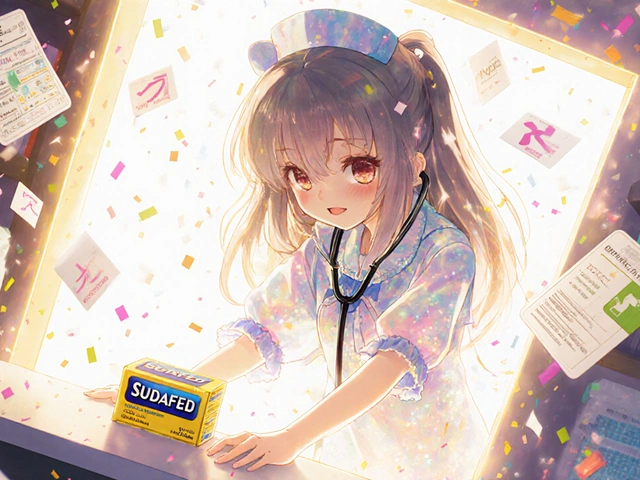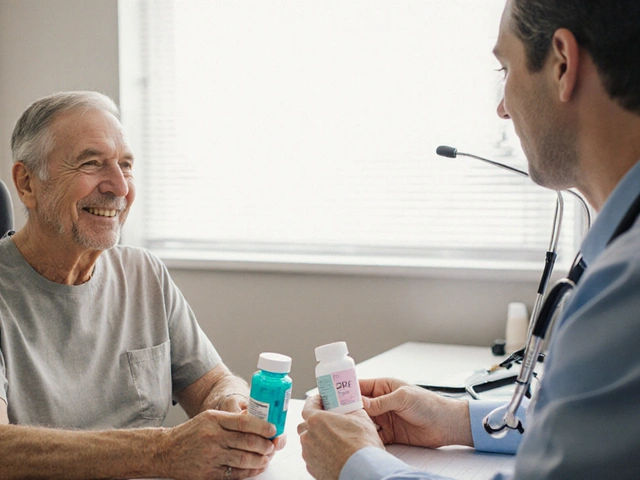Primaquine isn’t a drug you hear about every day, but if you’ve traveled to a malaria-prone region or been treated for a specific type of malaria, it might have saved your life. Unlike other antimalarials that target the blood stage of the parasite, primaquine goes after the hidden reservoirs-those dormant liver forms that can wake up weeks or months later and cause a relapse. That’s why it’s not just another pill in the malaria toolbox. It’s the final piece many people miss.
What primaquine actually does
Primaquine is an 8-aminoquinoline antimalarial. It works by killing the Plasmodium vivax and Plasmodium ovale parasites that hide in the liver after an initial infection. These are the strains that cause relapses-sometimes months after you’ve left a tropical country and thought you were in the clear. Most antimalarials like chloroquine or atovaquone-proguanil clear the parasites from your bloodstream, but they don’t touch the liver stage. Primaquine does. That’s its superpower.
It’s also used in combination with artemisinin-based therapies to kill the sexual forms of Plasmodium falciparum, the deadliest malaria parasite. By stopping these forms, primaquine helps prevent the spread of malaria from person to person via mosquitoes. This makes it a critical tool in global malaria elimination efforts, especially in places like Southeast Asia and parts of Africa where drug-resistant strains are rising.
Who needs primaquine and when
You don’t take primaquine unless you’ve been diagnosed with P. vivax or P. ovale malaria, or if you’re being treated for P. falciparum in a setting where transmission blocking matters. It’s not a preventive drug like doxycycline or mefloquine. You only take it after infection.
For relapse prevention, the standard dose is 15 mg (base) once daily for 14 days. That’s 26.3 mg of the phosphate salt. The treatment starts after the blood-stage infection has been cleared with another drug like chloroquine. Skipping primaquine after treating vivax malaria is like turning off the alarm but leaving the burglar in the house. You might feel fine now, but the parasites are still waiting.
In areas where falciparum malaria is common and drug resistance is a problem, a single 0.75 mg dose of primaquine is added to artemisinin combination therapy. This single dose reduces transmission by up to 80% in some studies, according to WHO guidelines from 2024. It’s a small amount, but it makes a big difference in stopping outbreaks.
Why primaquine can be dangerous
Primaquine isn’t safe for everyone. The biggest risk is hemolytic anemia in people with G6PD deficiency-a genetic condition where red blood cells can’t handle oxidative stress. Primaquine triggers this stress. If you have G6PD deficiency and take primaquine, your red blood cells can break down rapidly, leading to jaundice, dark urine, fatigue, and in severe cases, kidney failure or death.
That’s why testing for G6PD deficiency is mandatory before prescribing primaquine in most countries. In places like Papua New Guinea, Thailand, and parts of Ethiopia, up to 15-20% of the population has some form of G6PD deficiency. In the U.S., it’s less common but still present, especially in people of African, Mediterranean, or Southeast Asian descent. If you’ve ever had unexplained anemia or jaundice as a child, you should get tested before even considering primaquine.
Other side effects are milder but still common: nausea, stomach cramps, dizziness, and headaches. These usually go away after a few days. But if you start feeling unusually tired, your skin turns yellow, or your urine becomes tea-colored, stop taking it and get medical help immediately.

How it compares to other antimalarials
Let’s say you’re back from a trip to Cambodia and you test positive for P. vivax. Your doctor gives you chloroquine to clear the blood infection. That’s step one. But without primaquine, you have a 70-80% chance of relapsing within six months. That’s not a risk most people are willing to take.
Some newer drugs like tafenoquine (Krintafel) can do the same job as primaquine in a single dose. But tafenoquine is more expensive, harder to get outside the U.S. and Australia, and still requires G6PD testing. Primaquine remains the most widely available, cost-effective option globally. It costs less than $1 for a full 14-day course in many low-income countries.
Here’s how they stack up:
| Feature | Primaquine | Tafenoquine |
|---|---|---|
| Dosing | 15 mg daily for 14 days | One 300 mg dose |
| Cost (USD per course) | $0.50-$1.50 | $100-$200 |
| G6PD testing required | Yes | Yes |
| Availability | Global, WHO-listed | Restricted (U.S., Australia, few others) |
| Effectiveness | 85-90% | 88-92% |
For most travelers and health systems, primaquine still wins on accessibility and price. Tafenoquine is a good alternative if you struggle with adherence, but it’s not a replacement for primaquine in global programs.
What to do if you’re prescribed primaquine
If your doctor prescribes primaquine, here’s what you need to do:
- Confirm you’ve had a G6PD test. If not, ask for one before taking the first pill.
- Take it with food to reduce nausea. A light meal helps.
- Finish the full 14-day course-even if you feel fine after day 5.
- Watch for signs of anemia: pale skin, shortness of breath, dark urine.
- Don’t drink alcohol while on primaquine. It increases liver stress.
- Keep your follow-up appointment. Your doctor may want to check your blood count after treatment.
Some people worry about long-term effects. There’s no evidence primaquine causes lasting damage when used correctly. The risks come from skipping G6PD testing or stopping early. Don’t guess. Test. Finish. Stay safe.
Who should never take primaquine
Primaquine is off-limits in these cases:
- You have G6PD deficiency (confirmed or suspected)
- You’re pregnant (it can harm the fetus)
- You’re breastfeeding and your baby has G6PD deficiency (it passes into breast milk)
- You have active systemic infections like sepsis or severe liver disease
- You’re allergic to 8-aminoquinolines
If you’re a woman of childbearing age, your doctor should ask about pregnancy before prescribing. If you’re breastfeeding, your baby’s G6PD status matters too. In many regions, newborn screening includes G6PD testing-so ask your pediatrician if you’re unsure.

Why primaquine still matters in 2025
Despite newer drugs and better diagnostics, primaquine remains irreplaceable. The World Health Organization still lists it as an essential medicine. In 2024, over 12 million courses were distributed globally, mostly in sub-Saharan Africa and Southeast Asia. It’s the backbone of malaria elimination programs because it breaks the cycle of relapse and transmission.
Even with rising resistance to chloroquine in vivax malaria, primaquine remains effective. Its mechanism of action-damaging the parasite’s mitochondria-isn’t easily bypassed by mutations. That’s why researchers are now looking at combining it with new drugs to shorten treatment time. But for now, the 14-day course is still the gold standard.
For travelers, it’s not glamorous. No one wants to take a two-week course of pills after a vacation. But if you’ve been to Indonesia, the Amazon, or the Solomon Islands, skipping primaquine is like ignoring a warning light on your car’s dashboard. You might drive for months without trouble-but eventually, something will break.
Frequently Asked Questions
Can I take primaquine if I’ve had malaria before?
Yes, but only if you’ve been tested for G6PD deficiency. Previous malaria doesn’t protect you from side effects. In fact, people who’ve had relapses before are more likely to need primaquine again. Always get tested before restarting treatment.
Does primaquine kill all types of malaria?
No. Primaquine only targets Plasmodium vivax, Plasmodium ovale, and the sexual stages of Plasmodium falciparum. It does not treat the blood-stage infection of falciparum malaria-that’s why it’s always paired with another drug like artemisinin. It won’t work against Plasmodium malariae or Plasmodium knowlesi.
How long after taking primaquine can I drink alcohol?
Avoid alcohol during the full 14-day course and for at least 48 hours after your last dose. Alcohol increases oxidative stress on the liver and red blood cells, which can worsen side effects. Even if you feel fine, your body is still clearing the drug.
Can I buy primaquine over the counter?
No. Primaquine is a prescription-only medication in nearly all countries, including New Zealand, the U.S., and the EU. It’s not sold in pharmacies without a doctor’s order because of the risk of severe hemolytic anemia. Never take it without medical supervision.
What if I miss a dose of primaquine?
If you miss one dose, take it as soon as you remember. If it’s close to your next dose, skip the missed one and go back to your regular schedule. Don’t double up. Missing doses reduces effectiveness and increases relapse risk. If you miss more than two doses, contact your doctor-you may need to restart the course.
Is primaquine safe for children?
Yes, but the dose is based on weight. For children, the standard is 0.3 mg/kg of base (0.5 mg/kg of phosphate) daily for 14 days, with a maximum of 15 mg per day. G6PD testing is just as important for kids. In areas with high G6PD prevalence, pediatric screening is routine before prescribing.
Next steps if you’re considering primaquine
If you’ve recently traveled to a malaria zone and are wondering whether you need primaquine, don’t guess. Get tested for malaria first. If the test is positive for P. vivax or P. ovale, ask your doctor about G6PD testing and whether primaquine is right for you. If you’re planning a trip to a high-risk area, talk to a travel clinic. They can help you choose the right combination of prevention and treatment options.
Primaquine isn’t flashy, but it’s one of the most precise tools we have against a disease that still kills over 600,000 people a year. Used correctly, it stops relapses. Used incorrectly, it can cause harm. Knowledge is your best protection. Test. Follow. Finish.






Comments
Dana Dolan
November 19, 2025 AT 16:41 PMJust got back from a trip to Cambodia and my doctor handed me this script. I was like, ‘Wait, I already took the pills… why more?’ Then I read this post and now I get it. I’m not skipping this 14-day course. No way. My future self will thank me.
Zac Gray
November 21, 2025 AT 13:01 PMLet’s be real - primaquine is the unsung hero of tropical medicine. Most people think malaria’s over once the fever breaks, but nope. You’ve got little parasite ghosts haunting your liver like a bad Netflix horror flick. Primaquine is the exorcist. And yes, it’s a pain in the ass to take for two weeks, but so is dying from a relapse you could’ve prevented. Also, G6PD testing isn’t optional - it’s your body’s way of saying ‘I’m not a lab rat.’
Steve and Charlie Maidment
November 23, 2025 AT 05:01 AMWow. So much info. Honestly, this feels like someone tried to cram an entire medical textbook into a Reddit post. Do we really need to know the exact milligrams of phosphate salt? I just want to know if I’ll live or die. Also, why is everyone acting like this is some revolutionary breakthrough? It’s been around since the 1950s. We’re making it sound like it was invented last Tuesday.
Michael Petesch
November 23, 2025 AT 09:34 AMThis is an exceptionally well-researched and clinically accurate overview. I work in global health in Southeast Asia, and I can confirm that primaquine remains the cornerstone of relapse prevention in resource-limited settings. The cost differential between primaquine and tafenoquine is not trivial - it’s the difference between a national program’s sustainability and its collapse. The WHO’s 2024 guidance on transmission-blocking doses is also correct: even a single 0.75 mg dose significantly reduces community transmission. This isn’t just pharmacology - it’s public health policy in pill form.
Paige Lund
November 24, 2025 AT 13:40 PMSo… I take this for 14 days… and then what? Do I get a medal? A certificate? A free vacation to a malaria-free island? Just wondering if the effort is worth the hype.
Reema Al-Zaheri
November 25, 2025 AT 10:36 AMPrimaquine’s mechanism of action-targeting mitochondrial DNA in the hypnozoites-is both elegant and terrifying. The oxidative stress induced by 8-aminoquinolines, while lethal to the parasite, is equally hazardous to human erythrocytes lacking sufficient G6PD enzyme activity. This is why mass screening programs in endemic regions are non-negotiable. In rural India, where I’ve worked, we’ve seen preventable hemolytic crises due to presumptive treatment. Testing isn’t bureaucracy-it’s bioethics.
Michael Salmon
November 26, 2025 AT 08:39 AMLook, this whole post is just Big Pharma’s way of making you feel guilty for not taking more pills. You think malaria’s that scary? Try living in a country where the healthcare system can’t even give you clean water. Primaquine costs a dollar? Great. Now explain why I can’t get clean water for fifty cents. This isn’t medicine-it’s virtue signaling wrapped in a 14-day pill schedule.
Derron Vanderpoel
November 27, 2025 AT 04:44 AMI took this after my trip to Thailand and honestly? I cried on day 7. Not because I was sick, but because I was so tired of taking pills. My stomach was wrecked, I felt like a zombie, and my dog kept staring at me like I was dying. But I finished it. And now I’m alive. And my liver is still working. So… yeah. This post saved me. Thank you.
Timothy Reed
November 27, 2025 AT 04:47 AMThank you for this comprehensive and clinically sound summary. As a primary care provider, I often see patients who discontinue primaquine after feeling better. This post provides clear, actionable guidance that I can confidently share with my patients. The comparison table between primaquine and tafenoquine is particularly valuable for shared decision-making. I’ve already saved it as a reference.
Christopher K
November 28, 2025 AT 19:17 PMOh wow, another post telling Americans how to stay alive while traveling abroad. Next you’ll tell us not to drink the water. Meanwhile, in America, we’ve got people getting malaria from backyard mosquitoes in Florida. Why aren’t we talking about that? Why are we treating this like some exotic foreign problem? We need to fix our own damn system before we start handing out pills like candy.
harenee hanapi
November 29, 2025 AT 04:17 AMOMG I had malaria in 2019 and I didn’t take primaquine and now I have nightmares about it and my skin turns yellow every time I eat spicy food and I think my cat is judging me and I’m so scared to travel again and I’m not even sure if I’m still infected??? Please help someone I need a therapist and a doctor and a hug
Christopher Robinson
November 30, 2025 AT 18:16 PM👏👏👏 This is the kind of post that makes Reddit worth it. Seriously, thank you. I’m a nurse in rural Kenya and we use primaquine every single week. The fact that it’s cheap, effective, and saves lives? That’s the kind of science we need more of. Also, this deserves a 🌍💊❤️. Let’s get this info into the hands of people who need it.